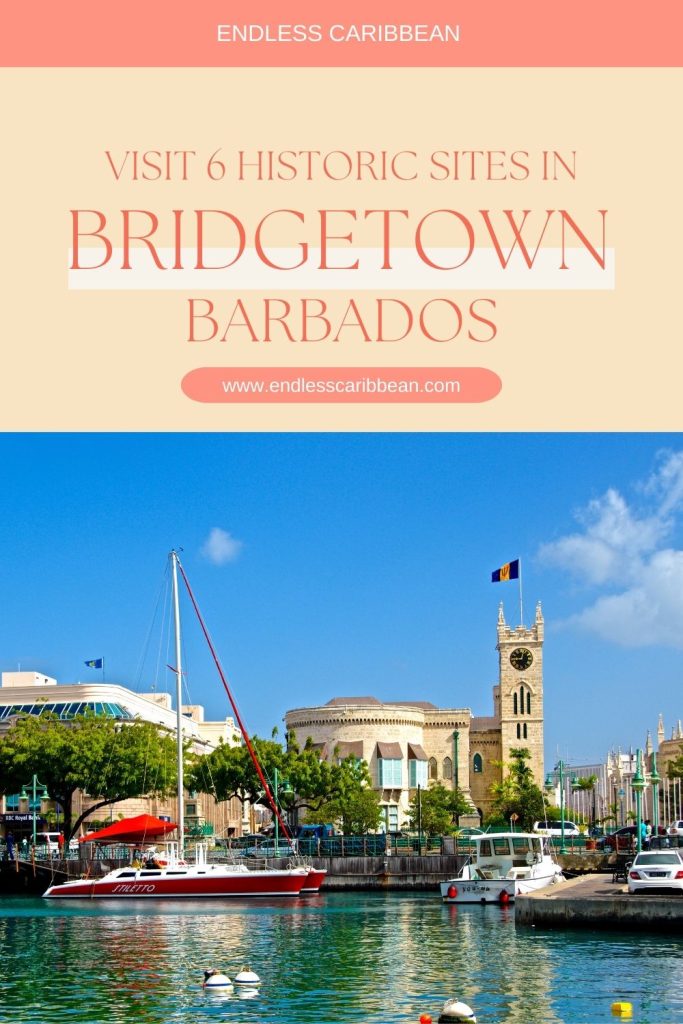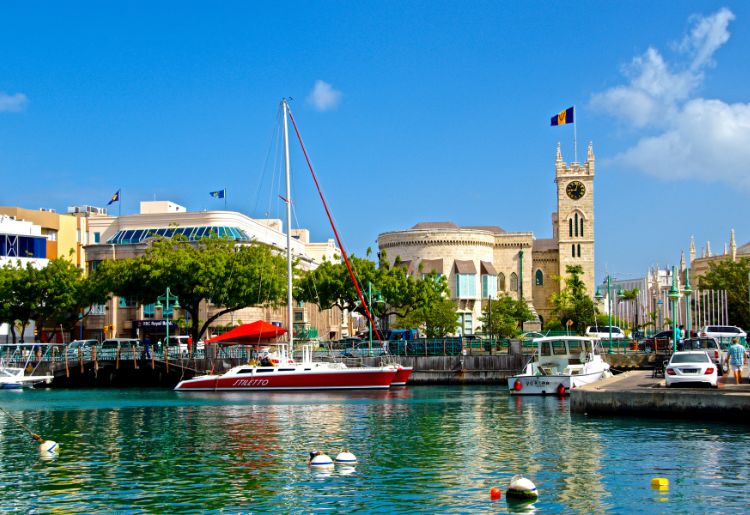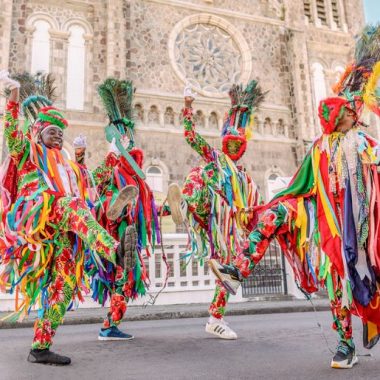The stories that live on from generation to generation provide intriguing explanations about the role of the city of Bridgetown in Barbados’ history. Modern day Bridgetown is primarily a quiet shopping and business area. However, its claim to fame is as a bustling commercial centre that was the heart and soul of activity in Barbados.
Bridgetown is one of the earliest established towns in the Caribbean and was one of the most important ports in the British Atlantic trade. The city’s importance was strengthened by St. Ann’s Garrison, the former base of the British. The area, which is officially recognised as Bridgetown and its Garrison is one of most recognised cities in the British colonial empire. Further, UNESCO recognised the importance of the area and it was designated a UNESCO World Heritage Site in 2011.
As a result of the British acquisition of Barbados, there was substantial infrastructural development of Bridgetown and the Garrison areas. Churches, monuments, military buildings, forts, and other structures were built in the likeness of the British infrastructure. The layout of Bridgetown, its close proximity to the Garrison and the presence and preservation of British colonial architecture and symbols, are some of the reasons why visitors fall in love with the city.
If you are visiting Barbados, a tour of the once fortified Bridgetown and its Garrison is recommended. Here are six historic sites in Bridgetown that you cannot miss.
St. Ann’s Fort
St. Ann’s Fort is a historic fort in the Garrison historic area and one of the most celebrated structures in Barbados British military history. It was built in the 17th century as a coastal defence by the British to protect the island and its military base from foreign rivals. Named after Her Majesty, Queen Ann, the triangular fort was constructed of coral stone and is equipped with three bastions that face the sea. Additionally, the fort has an elevated view of the historic Garrison. Since construction, the fort has served as a military barracks and a prison. Today St. Ann’s Fort is the Barbados home to the Barbados Defence Force. It is also a tourist attraction where visitors can learn about the history of the Garrison and view collections of 17th century English artillery.
Contact the Barbados Defence Force:
Website: Barbados Defence Force
Telephone: 246-536-2000
The Barbados Museum
Just a leisurely and comfortable walk away from St. Ann’s Fort, the Barbados Museum is the premier museum on the island. It is housed in the former British Military Prison and works to collect, document and conserve Barbados’ heritage. The museum offers a glimpse into Barbados’ history and culture via its collections of exhibits, artifacts from the island’s indigenous people and British colonizers. The museum is managed by The Barbados Museum & Historical Society, a non-profit non-governmental organisation. In addition to tours at the museum and authentic art in the gift shop, the council arranges arts, cultural and historic tours, historic walking guided tours, festivals, island scavenger hunts and other activities. Please note that tours must be booked 48 hours in advance.
Contact the Barbados Museum and Historical Society:
Facebook Page: Barbados Museum and Historical Society
Telephone: 246-538-0201
Email: tours@barbmuse.org.bb
The Parliament Buildings
The Parliament Buildings are familiar landmarks at the top of Broad Street in the heart of Bridgetown. Construction was completed on the buildings in 1873 and since then, the buildings have been a prominent landmark in the city. Since 1874, the buildings have been the meeting place for Barbados’ two chambers – the House of Assembly and the Senate. To preserve the history of the buildings and educate the public about Barbados’ history, a Museum of Parliament and the National Heroes Gallery were created. The Museum of Parliament traces the birth and growth of democracy in Barbados and presents exhibits, artwork, sculptures, and an interactive experience. Conversely, the National Heroes Gallery celebrate the qualities of Barbados’ eleven national heroes. Guided tours of the Parliament Buildings are available when the Senate and Parliament are not in session.
Contact The Barbados Parliament:
Website: The Barbados Parliament
Email: clerk@barbadosparliament.com
The Cathedral Church of Saint Michael & All Angels
The Cathedral Church of Saint Michael & All Angels, also known as the Saint Michael’s Cathedral, is another landmark and one of the must-visit historic sites in Bridgetown. It is an Anglican church which was first established in 1628 on the site where St. Mary’s Anglican Church is situated. That original structure was lost to rot, so a new church was built on the current site in 1641. The new building served the rapidly expanding population in Barbados until 1780 when the island was devastated by a hurricane and the church decimated. The current building was dedicated in 1789 on the feast of St. Michael and All Angels which inspired the name of the new church. Saint Michael’s Cathedral was rebuilt with exceptional craftsmanship and design, most of which are still intact. Visitors are welcome to visit the church and observe the wooden roof, stained glass windows, sculptures, and wall galleries.
Contact The Cathedral Church of Saint Michael & All Angels:
Website: The Cathedral Church of Saint Michael & All Angels
Telephone: 246-427-0790
Synagogue Historic District in Bridgetown
The Synagogue Historic District consists of several buildings and monuments. They are the Nidhe Israel Synagogue, Nidhe Israel Museum, the Mikvah, the Emancipation Monument, Artisan’s Workshops, a newly constructed Social Hall, and cemeteries. A little-known fact is that the Nidhe Israel Synagogue is one of the oldest synagogues in the Western Hemisphere. Its history goes back to 1628 which Sephardic Jews arrived on the on the island and constructed the building. However, it was rebuilt in 1833 after the first synagogue was damaged by a hurricane in 1831. Visitors can tour the museum, Mikvah and synagogue Monday through Friday from 9:00 a.m. and 3:00 p.m.
Contact the Barbados Synagogue Historic District:
Website: Barbados Synagogue Historic District
Telephone: 246-436-6869 / 246-256-0781
Email: admin@synagoguehistoricdistrict.com
The National Library
The history of the National Library building starts with the philanthropic kindness of Andrew Carnegie. He shared his wealth by financing the construction of over 2,500 libraries around the world. Barbados’ National Library on Coleridge Street, which was constructed between 1903 and 1906 is one of these historic libraries. Carnegie donated £4,800 to the construction fund on two conditions that the government of Barbados must abide by. One was that the library would remain free, and the other was that government would maintain the library. Thus, the government agreed, donated the land and the library was built. The structure is primarily coral-stone, a popular material in the English Renaissance era. As a result, the library was opened to the public of Barbados in 1906. Unfortunately the library is no longer in use because it needs repairs. However, it is still one the most historic sites in Bridgetown.
Historic Sites in Bridgetown
For more information about other historic sites in Barbados, please visit the following links:
UNESCO: Historic Bridgetown and its Garrison
Visit Barbados: What’s in a Town
The Islander (The Crane Blog): The History of Bridgetown, Barbados
Black Past: Bridgetown, Barbados
Bridgetown Historical Society Inc.: A Short History of Bridgetown
Barbados Pocket Guide: Bridgetown
Image: Kathryn Maingot via Unsplash
Related Posts
- St. Kitts and Nevis’ Arts and Culture Scene
- National Parks in the Caribbean
- Oldest Artifacts in Saba Discovered at Black Rocks
- Historic Churches and Cathedrals in the Caribbean
- The Belize Cultural Mosaic Itinerary















